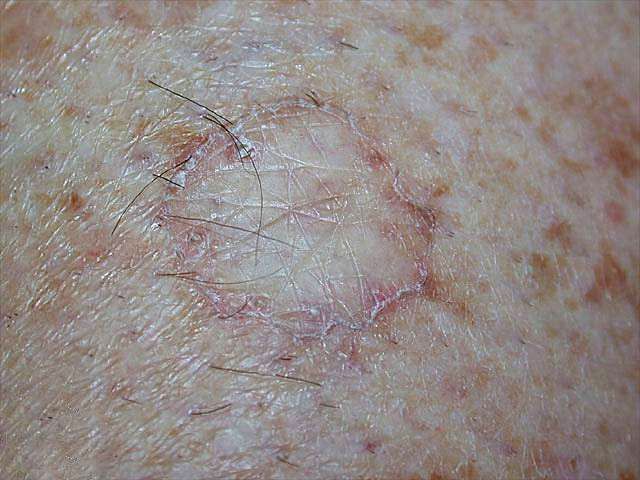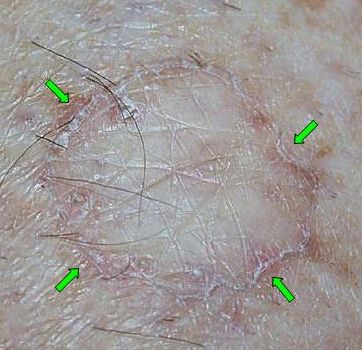- Clinical Technology
- Adult Immunization
- Hepatology
- Pediatric Immunization
- Screening
- Psychiatry
- Allergy
- Women's Health
- Cardiology
- Pediatrics
- Dermatology
- Endocrinology
- Pain Management
- Gastroenterology
- Infectious Disease
- Obesity Medicine
- Rheumatology
- Nephrology
- Neurology
- Pulmonology
Porokeratosis
These hypopigmented well demarcated round patches with an atropic center are typical of porokeratosis, which can appear at any age.


A 68-year-old man presented with the chief complaint of several enlarging but asymptomatic, well-demarcated, round patches on each leg. The lesions were nontender but felt “rough.”
Key point: A hyperkeratotic border (arrows) delimits the lesion and accounts for the roughness. Close examination shows a slightly hypopigmented and atrophic center. This appearance is typical for porokeratosis. A large or small number of moderate-sized lesions, generally on the extremities, characterize porokeratosis of Mibelli. Lesions can appear in persons of any age, even in the geriatric population.
Treatment: Small lesions can be excised with narrow margins. Larger, or more numerous, lesions are often treated with combination topical therapy, including 5% imiquimod, 5% 5-fluorouracil, a retinoid, and salicylic acid. Photodynamic therapy may also be employed.
Note: The reason to attempt eradication is the small-but real-risk of evolution into cutaneous squamous cell carcinoma.
